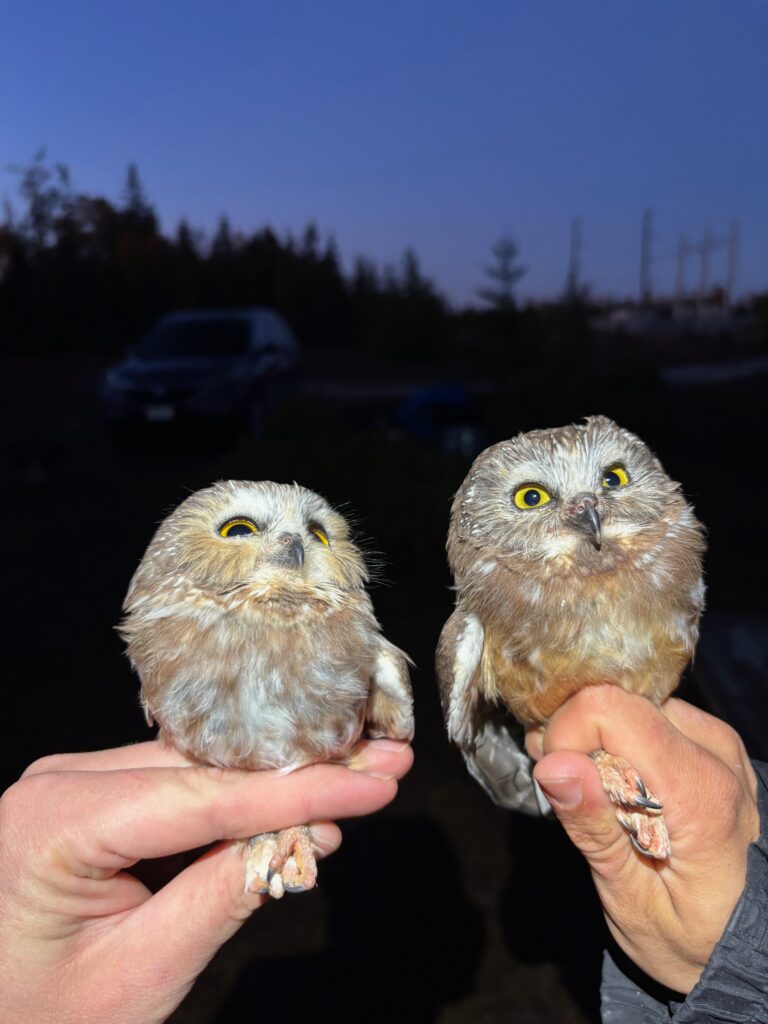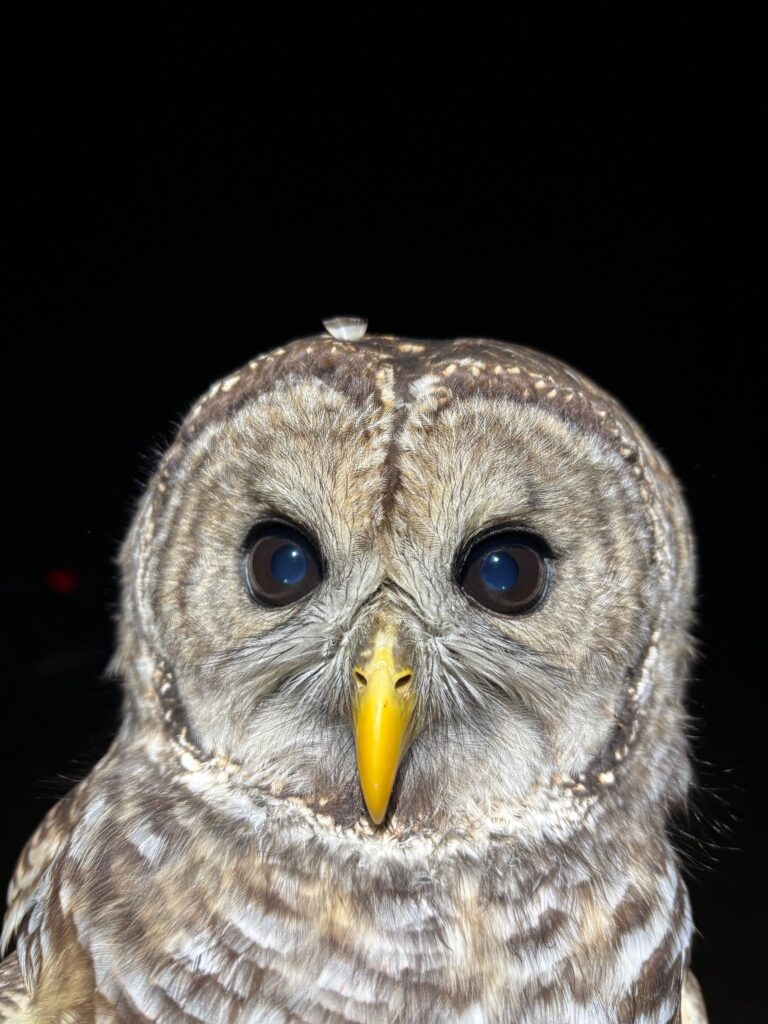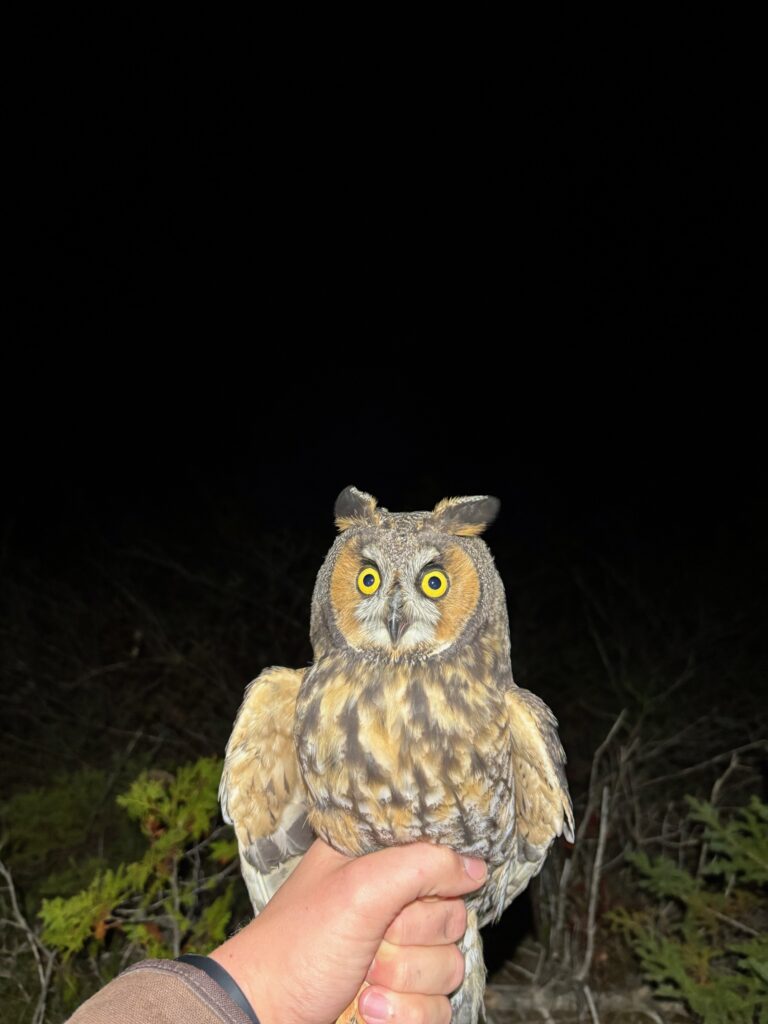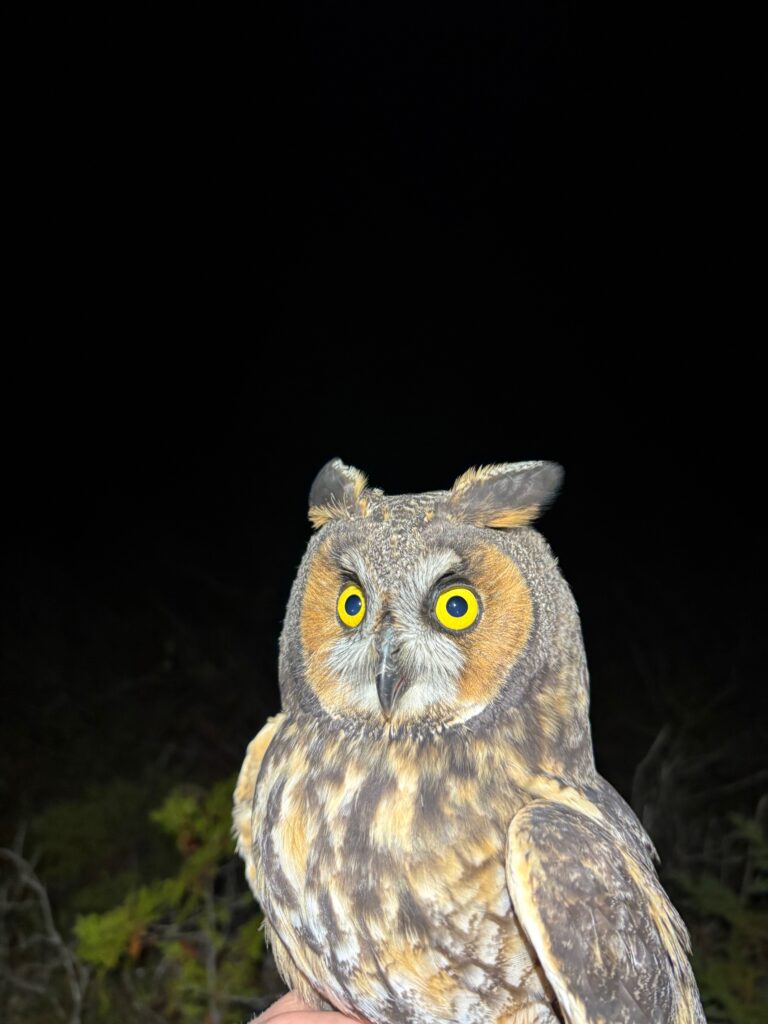Our fifth week at the Straits presented us with a downturn, partly due to multiple days of unsuitable weather. We were forced to either close our nets earlier or open them later for four out of seven nights this week. Seventy-eight birds were captured this week, which is down from 107 last week, for a season total of 275. It’s difficult to determine if we are now passing the peak migration period or we just missed out on birds because of the bad weather days. Our number of northern saw-whet owls (NSWOs) continues to grow still with 270 captures. As discussed last week, our sex ratio continues to widen with only 47 males captured to 182 females and 41 birds classified as unknown.
One NSWO caught this week was still displaying some its juvenile plumage. This bird likely hatched relatively later in the nesting season earlier this summer, as evident by its prominent cinnamon-colored belly.

An additional barred owl (BDOW) was captured this week on October 15th after being caught investigating our nets the previous two nights for a potential NSWO meal. We observed another individual during our last night of the week that we’re hoping to catch sometime this week.

We had another special guest this week in the form of a long-eared owl (LEOW) the night of the 14th! This species is intermediate in size between the NSWO and BDOW and listed as endangered in the state of Michigan. Their name derives from the prominent tufts on their heads that are technically not actual ears, but rather are feathers that assist this bird in camouflage and communication. The individual we caught was identified as female primarily due to the buffy or orange color along her underwing, while males are typically paler.

This week we would like to highlight an initiative with the Bird Genoscape Project (BGP) that was completed earlier this season. The BGP is an effort from multiple researchers to better determine the migratory flyways of different bird species by mapping their genetic variation or creating a genoscape. This is accomplished by analyzing DNA samples from migratory or wintering birds and tracing their genetic structure back to their breeding population of origin. The least invasive way to obtain a DNA sample from a bird is to collect a feather sample. Only one feather is needed and the practice is harmless long-term as the bird will regrow that feather, especially if it’s already actively molting as most of our NSWOs passing through the Straits are exhibiting. Better understanding the breeding origin of birds banded along their migratory routes can aid in their conservation by helping to identify breeding areas and migratory routes in need of additional management and protection.

Season Numbers:
Total: 275, NSWO: 270, BDOW: 4, LEOW: 1
Jake and Josiah
